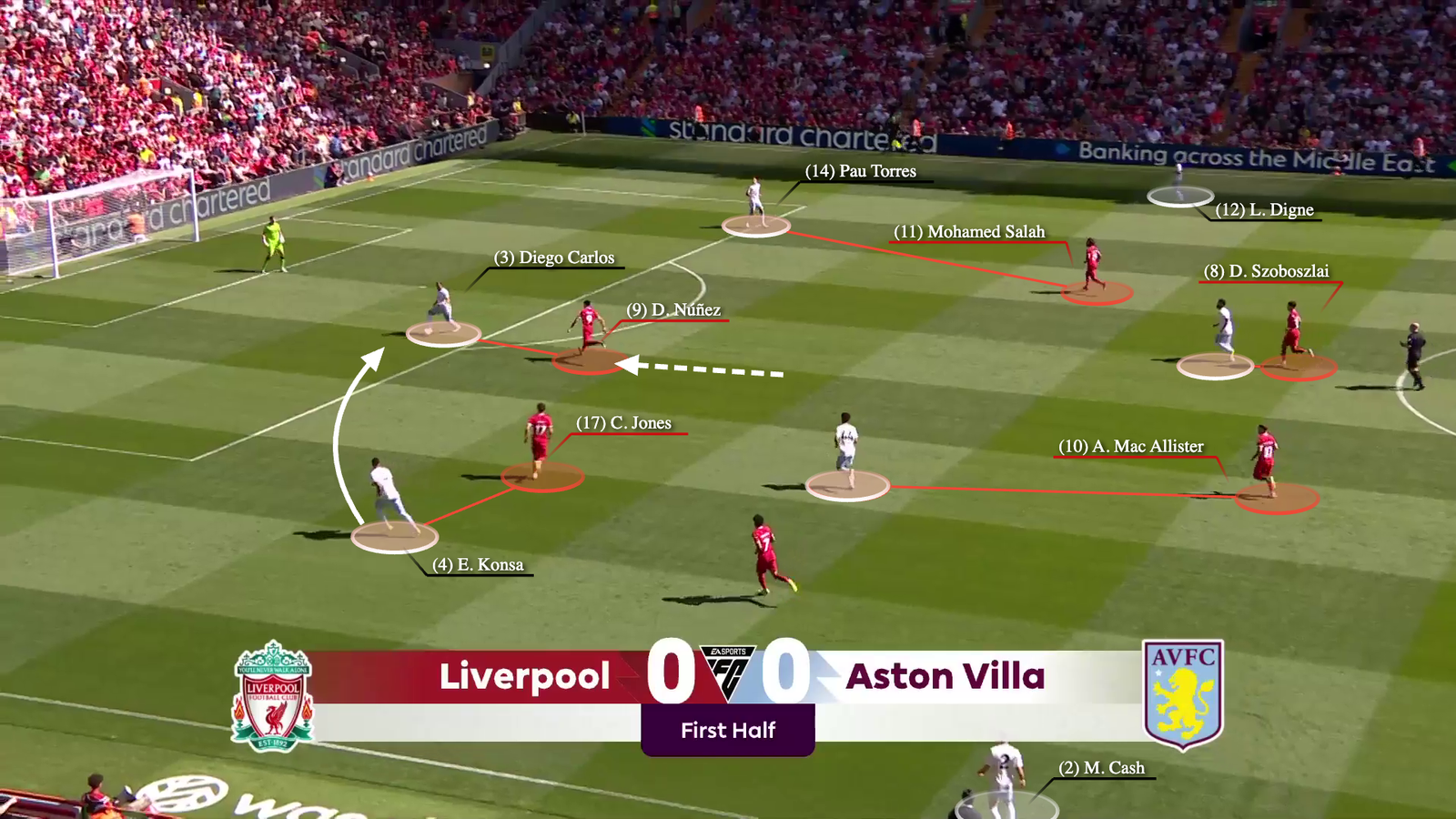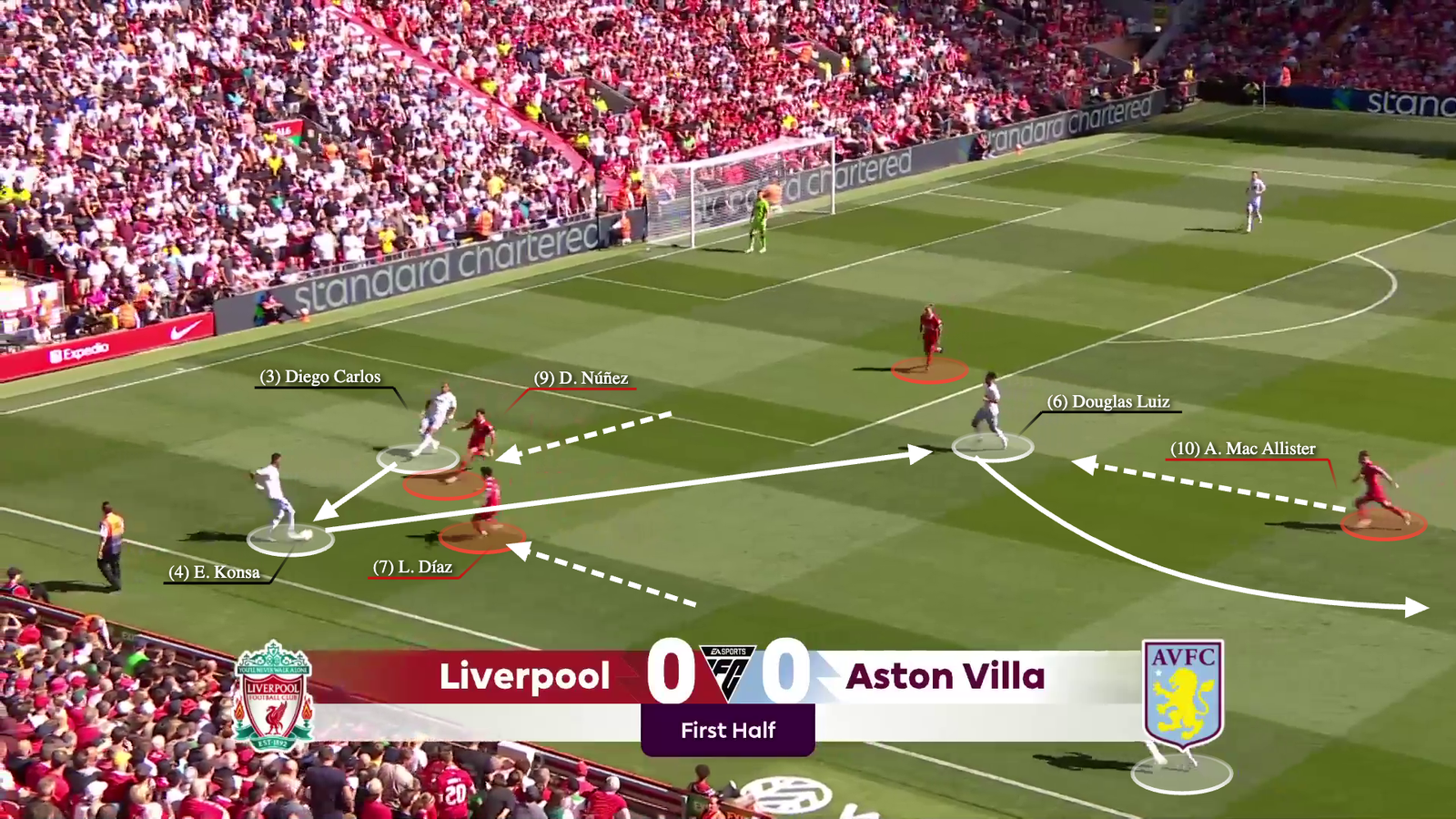And breathe…
The 2023-24 Premier League season was all-action even if there was no final-day twist, as Manchester City made history by winning the Premier League for a fourth consecutive season.
It was a season packed with tactical nuance — from short passing and high pressing becoming even more popular to record-breaking penalty-conversion rates. Old-fashioned strikers were refashioned while teams continue to trust young players. Here, then, are The Athletic’s 2023-24 Premier League tactical trends.
So. Many. Goals.
For the second campaign running, the Premier League broke its seasonal goal record. In fact, broke is an understatement — the record was smashed. This season surpassed 2022-23’s total, (1,071 goals) in late April, finishing at a combined 1,246 goals. It is the highest goals-per-game rate (3.28) in an English top-flight season since 1964-65, and prompted Atletico Madrid head coach Diego Simeone to say “nobody is defending”.
You would be forgiven for thinking that sheer volume is the result of many high-scoring individuals, but only three players scored 20+ goals. For four consecutive seasons between 2016-17 and 2019-20, at least four players hit that mark. Rather than outstanding individuals there has been a general improvement in goalscoring wide players, midfielders who chip in and impact substitutes.
1,223 – Jarell Quansah has scored the 1,223rd goal of this season’s @premierleague; a new all-time competition record, overtaking the 1,222 scored in the inaugural 1992-93 campaign, which was a 22-team season. Gluttony. pic.twitter.com/5ruIIJHv4g
— OptaJoe (@OptaJoe) May 19, 2024
Increased added time means matches are longer, but that is only a partial explanation. More significantly, teams are recruiting head coaches/managers with specific, uncompromising attacking styles. Think Aston Villa’s high line under Unai Emery, Ange Postecoglou’s Tottenham Hotspur with ‘full-backs’ that play like No 10s, or Brighton & Hove Albion’s deep build-up to bait the press.
At their best, those styles carve opponents apart to create chances, and make high turnovers close to the opposition goal. It means they are more likely to score but those high-risk styles result in more errors too. Those three were among 17 sides who all conceded at least 50 goals this season, the most since 1909-10.
This upward trend in goals has coincided with increased game time for young defenders. Under-21 defenders played 80 per cent more minutes in 2023-24 than 2018-19 and, while it would be an oversimplification to suggest a direct correlation, it is generally accepted that young(er) players make more errors and need more time to acclimatise to senior football, especially with such demanding contemporary styles.
Everyone loves passing
City are the first Premier League team to average a seasonal pass-completion rate of over 90 per cent (and almost certainly the first team in England’s top-flight history to do so). They won their final nine league games, scoring at least twice in each, while a final-day pass-completion of 93.6 per cent against West Ham was their second-highest across the season (behind 93.6 per cent at home to Sheffield United).
It was capped with a classic Rodri display, who scored the game-sealing third goal — a pass into the bottom corner — and came out with the most completed passes (123).
Notably, that passing display did not even crack the top 40 instances of players with the most passes in a Premier League game in 2023-24. Extend that to the top 100 and you will find multiple instances of Fulham, Brighton, Aston Villa and Newcastle players — gone are the days when only ‘Big Six’ clubs tried to play a passing game.
Across the league, teams continued to build up in a shorter fashion than ever before. There were record-low rates for goalkeeper-launched passes (kicked 40+ yards) in open play and at goal kicks, down by 21.4 and 34.5 per cent compared to 2017-18.
Proper strikers are back
Remember when the No 9 had died out? Coaches were obsessed with false forwards or wingers leading the line as they were much more adept at dropping in to overload the midfield and facilitate passing moves.
Attackers exist, increasingly, in a state of flux. Long passes, crosses and flicked-on passes continue to trend downwards but box forwards and physical strikers that can play on the last line show they are tactically immortal. There were Roy Keane’s comments in April that Erling Haaland played “like a League Two player” because his game is all about runs in behind, duelling centre-backs and finishing, not linking attacks.
With so many teams pressing high — often with player-for-player approaches — strikers with a physical presence become an essential outlet, especially for teams who play short first. Likewise, those pressing approaches vacate space close to a team’s own goal, which can be exploited by a No 9 who runs in behind.

Solanke scored 19 goals in the league this season (Eddie Keogh/Getty Images)
For the first time since 2019-20, all of the Premier League’s top seven clubs boasted a player with 15+ goals. Across the division, headed goals in open play were up to 95, having been consistently around 75 in the previous three campaigns.
Take a glance at the top assister-goalscorer combinations and the golden thread is a creative winger or No 10 setting up a No 9. Liverpool and Bournemouth had their primary method of box entry as a winger crossing for a No 9, while for Tottenham, West Ham, Brighton and Luton, it was a playmaker supplying the striker from a more central position.
Top goal combos, Premier League, 23-24
| Team | Assister | Goalscorer | Goals |
|---|---|---|---|
|
Elanga |
Wood |
6 |
|
|
Nunez |
Salah |
5 |
|
|
Bernardo |
Foden |
4 |
|
|
Palmer |
Jackson |
4 |
|
|
Bailey |
Watkins |
4 |
|
|
Watkins |
Bailey |
4 |
|
|
De Bruyne |
Haaland |
4 |
|
|
Senesi |
Solanke |
4 |
Under pressure
Speaking to The Athletic earlier this season, Chelsea head coach Mauricio Pochettino explained how the Premier League has become more homogenous in the past decade: “When we arrived here (2013), you would have 20 teams in the Premier League and it was difficult to find two or three teams playing in the same kind of style. It was all different and really attractive and exciting. Now it’s like all teams try to build from the back, all the teams try to press high all the time. It’s like it was contagious”.
In 2018-19, there were 2,134 high turnovers, defined by Opta as an open-play possession beginning 40 metres or less from the opponent’s goal, a proxy for high pressing and/or counter-pressing. In 2023-24, there were 2,895, a rise of over 35 per cent from five seasons ago.
The usual suspects were at it — like Liverpool against Aston Villa in September. Jurgen Klopp’s team did so in the player-for-player style that most teams shift into from their mid-block shape.


Or Brighton’s player-for-player press away to Tottenham, with centre-back Jan Paul van Hecke following James Maddison into the Tottenham half. Postecoglou’s side picked it apart with midfield runners through the centre, as Brighton had pushed Van Hecke so high.

But those who you might not expect pressed high too. Bournemouth were the best-of-the-rest in this department, with nine goals scored from final-third regains. That included Dominic Solanke’s opener away to Brighton, after Ryan Christie arced his press to block Bart Verbruggen’s pass.

The number of goals from final-third regains has risen in each of the past four seasons, while the increased commitment with which more teams are going full-court press means there is space to be exploited by quick forwards in behind — something that has undoubtedly contributed to the increased goals rate. Such intense styles are physically demanding and test a team’s squad depth, with Newcastle epitomising the difficulties in sustaining a high-press approach.
Left-footed penalties
For myriad reasons, penalties are always volatile to statistically analyse. Conversion rates are never consistent across seasons, but average out that four in five are scored. Prior to this season, the highest penalty conversion rate in a single Premier League season was 83.9 per cent, in 2013-14. In 2023-24, 89.7 per cent were scored — 96 out of 107.

A very familiar sight in the 2023-24 Premier League (Glyn Kirk/AFP via Getty Images)
This could easily overcorrect in the other direction next season, though the 2019-20 law changes (which forced the goalkeeper to be on the line at the point of contact) significantly favour the taker. With 2023-24 the fifth season since VAR’s introduction, players may now be used to the added time delay it brings, as longer wait times have been correlated to lower conversion rates (because it adds anxiety).
But the true story with penalties this season is how many were taken left-footed — 44 out of 104, or 41 per cent. It is the most left-footed penalties in any Premier League season, and goalkeepers have been found, across independent studies, to be worse predictors of left-footed penalties because they face them less regularly.
Forty-one of those 44 left-footed penalties were scored, including all nine by Cole Palmer. Chelsea’s talisman now holds the record for the most penalties scored in a Premier League season without missing any, and showed the ideal balance for a taker: having enough variety to stay unpredictable while consistently scoring with a trademark kick (bottom-right corner).

(Top photo: Glyn Kirk/AFP via Getty Images)
Read the full article here


